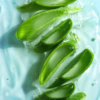Premix for Hot/Cold Process Soap
R220,00
Premix for Hot/Cold Process Soap – With a balanced blend of high-quality oils and a 5% superfat, this premix ensures excellent lather in every bar.
9 in stock
Premix for Hot/Cold Process Soap
1000g Oil Blend
Create handcrafted soap easily and safely with our Hot/Cold Process Soap Premix – the perfect beginner-friendly base for your DIY soap projects. With a balanced blend of high-quality oils and a 5% superfat, this premix ensures excellent lather, conditioning, and hardness in every bar.
What’s Inside the Premix?
Our premix contains 1000g of carefully measured oils, formulated for versatility and ideal results in both cold and hot process methods:
-
Coconut Oil – 24%: Offers cleansing power and a bubbly lather
-
Olive Oil – 44%: Adds nourishment and a silky, gentle feel
-
Palm Oil – 33%: Contributes to a hard, long-lasting bar
This recipe includes a 5% superfat and is designed for a 33% lye concentration, making it perfect for beginners and experienced crafters alike.
How to Use for Hot Process Soap
You’ll Need:
-
136g Sodium Hydroxide
-
252g Distilled/De-ionised Water
-
Slow Cooker
-
Stick Blender, Soap Mould, Safety Gear
Instructions:
-
Safety First: Wear gloves, long sleeves, goggles, and a mask when handling lye.
-
Make Lye Solution: Slowly add 136g sodium hydroxide to 252g water (never the reverse), stir until dissolved.
-
Melt Oils: Add your premix to a slow cooker and melt on high until fully clear.
-
Blend & Cook: Add the lye solution to warm oils, blend to trace, then cook on low for 1 hour. Stir occasionally and observe the stages (Champagne Bubbles → Applesauce → Mashed Potato).
-
Finish & Mould: Once fully cooked, add fragrance or colourants. Spoon thick batter into moulds, smooth tops, and allow to cool before cutting. Bars are safe to use immediately but benefit from a 4–6 week cure.
How to Use for Cold Process Soap
You’ll Need:
-
141g Sodium Hydroxide
-
287g Distilled/De-ionised Water
-
Stick Blender, Mould, Infrared Thermometer
Instructions:
-
Safety First: Use full protective gear.
-
Melt Oils: Place sealed premix in a pot of hot water until clear. Pour into mixing jug.
-
Make Lye Water: Slowly add lye to water and stir.
-
Combine at Temperature: Wait until both lye and oils are ±32–33°C. Combine gently.
-
Blend & Pour: Stick blend to desired trace. Add colourants or fragrance if desired. Pour into mould, tap to release air. Texture top, spray with 99% isopropyl alcohol to prevent soda ash.
-
Cure: Unmould after 18–24 hours. Cure for 4–6 weeks for a hard, long-lasting bar.
Why Choose This Premix?
-
Saves Time: No weighing or measuring oils
-
Versatile: Suitable for both hot and cold process methods
-
Beginner-Friendly: Simple instructions and balanced formula
-
Customizable: Add your own scents, botanicals, or colourants
-
Quality Ingredients: Each oil is chosen for performance, nourishment, and lather
Whether you’re crafting for fun, gifting handmade soap, or starting a business, our Hot/Cold Process Soap Premix gives you a reliable, easy foundation for beautiful, skin-loving bars.
🧼 Ready to get started? Suit up and create your own artisan soap today!
| Weight | 1,025 kg |
|---|---|
| Dimensions | 15 × 15 × 5 cm |












